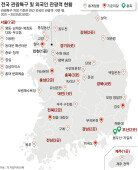Japan finishes semiconductor factory in 20 months
Japan finishes semiconductor factory in 20 months
Posted February. 20, 2024 07:44,
Updated February. 20, 2024 07:44
The TSMC Kumamoto factory in Taiwan, with full support from the Japanese government and aimed at "rebuilding the semiconductor industry," is scheduled for completion on Saturday. Only two years and four months have passed since the construction plan was announced in October 2021, and it's been one year and 10 months since the groundbreaking in April 2022. Considering trial production started at the end of last year, the semiconductor factory was built in just 20 months—a remarkably quick feat in the typically slow-moving and highly regulated Japan.
Originally expected to take five years, the factory's construction progressed seamlessly from planning and infrastructure development to groundbreaking and completion. The normal timeframe from plan announcement to groundbreaking, usually two years, was cut down to six months. The construction timeline was further reduced by two months through round-the-clock work. Local governments proactively tackled challenges like industrial water supply and road maintenance. Additionally, the Japanese government provided significant backing, contributing 476 billion yen (about 4.24 trillion won) or 40% of the investment as subsidies.
In declaring a semiconductor revival, Japan has embarked on a concerted effort between government and industry. It has set aside pride to bolster the semiconductor supply chain, lavishing tax breaks and support on factories established by foreign companies. Long-standing regulations, in place for over 50 years, were loosened to permit the building of high-tech factories, including those for semiconductors and batteries, on agricultural and forest lands. This shift mirrors Japan's intense introspection over its decline to a peripheral status in the global semiconductor market since the 1980s, after being overtaken by South Korea and Taiwan.
In stark contrast, South Korea significantly trails in the semiconductor competition. The SK hynix Semiconductor Cluster in Yongin, chosen in February 2019, has still not begun proper construction. Originally scheduled to start in 2022, construction has faced numerous delays due to local objections, land compensation issues, and water supply permitting, among other hurdles. Even if construction starts next year, with operations starting in 2027, it will take eight years. Similarly, Samsung Electronics' Pyeongtaek plant lost five years to disputes over transmission towers.
The slow progress in South Korea's semiconductor industry is a recent issue. Forty-one years ago, Samsung completed a semiconductor factory in just six months following its "Tokyo Declaration" to enter the semiconductor business. The desperate unity between the government and corporations made this rapid construction possible. Last month, the government unveiled a plan to invest 662 trillion won in semiconductor cluster development by 2047. However, without proper execution, such ambitions remain ineffective. In a world where technology evolves at an ever-increasing pace, bold investments and quick action are crucial for survival in the semiconductor arena.
Headline News
- N. Korea redefines S. Korea as ‘hostile state’ in revised constitution
- Samsung develops graphic DRAM with industry-leading capacity and speed
- Three questions allegedly leaked via text message during Yonsei Univ. essay test
- China to inject 340 trillion won in loans to support real estate sector
- Dodgers beat Mets to take 2-1 lead in NLCS







